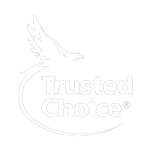Courtesy of iii.org
 Many businesses—especially small businesses with fewer employees—depend on a single person or a few key people for their success. If a key person becomes unable to work or dies, the business might lose valuable accounts or be temporarily unable to operate, resulting in lost revenue.
Many businesses—especially small businesses with fewer employees—depend on a single person or a few key people for their success. If a key person becomes unable to work or dies, the business might lose valuable accounts or be temporarily unable to operate, resulting in lost revenue.
The loss of an important employee can hurt the morale of a business, but the financial impact can be mitigated if a business purchases key person insurance. This type of coverage can enable a business to continue paying its bills and fund the search for a new employee. In unfortunate instances where a business cannot survive without the key employee, the funds from key person insurance can be used to pay severance to employees, distribute funds to investors and close the business in an orderly manner.
Key person insurance is usually owned by the business, which pays the premiums. This coverage is also a requirement of most banks and lending institutions when applying for financing or credit.
Who qualifies as a “key person”?
There are no hard-and-fast rules for identifying key persons in your business. Generally, anyone who directly contributes to a company’s bottom line or is fundamental to its operations might be considered a key person. Examples include:
- C-Suite Executives—such as a CEO or COO.
- Leading sales personnel.
- Heads of product development.
- Engineers or other difficult-to-replace personnel.
Types of key person insurance
Key person insurance comes in the following two forms:
- Key Person Life Insurance—This type of coverage differs from regular life insurance in that it specifically covers individuals in a business who are crucial to company operations. It provides the business with an infusion of cash if an insured key employee dies, regardless of cause or place of death. These funds can help compensate for revenue lost as a result of the death, as well as pay off debts, buy out surviving shareholders’ interest from heirs and finance the costs of a new employee search or training programs. Key person life insurance can be purchased as term insurance lasting for a defined period of time or as extended universal or whole life coverage. The amount of coverage is based on a key person’s income, overall business revenue and the portion of revenue attributable to the key person.
- Key Person Disability Insurance—This policy will provide funds to a business if an insured key employee becomes disabled and unable to work—partially or entirely. While standard disability insurance covers an employee’s lost salary and medical expenses, a key person disability policy provides funding to a business to make up for lost revenue, the cost of hiring a new employee and other related expenses.
Like other disability and life insurance policies, the cost of premiums for key person insurance depends on the age, health and role of the key employee, as well as the risks the employee takes in their personal life—for example, does the CEO fly her own plane?
“First-to-die” key person coverage
A cost-effective option for buying key person insurance is for a group of executives to join together on a “first-to-die” policy that insures just the first of the group who passes away. Once the policy is used to cover the loss of the first person to die, another member of the group becomes eligible for coverage. Thus, the key person insurance continues for the new members of the leadership team, but premiums reflect the fact that only one life is being covered at a time.
This type of insurance can be a useful tool when it comes to succession planning for your business—and having a succession plan is crucial to ensure the successful transfer of your company or business interests.
Your insurance professional can provide guidance on options and costs of individual and first-to-die key person coverage.



